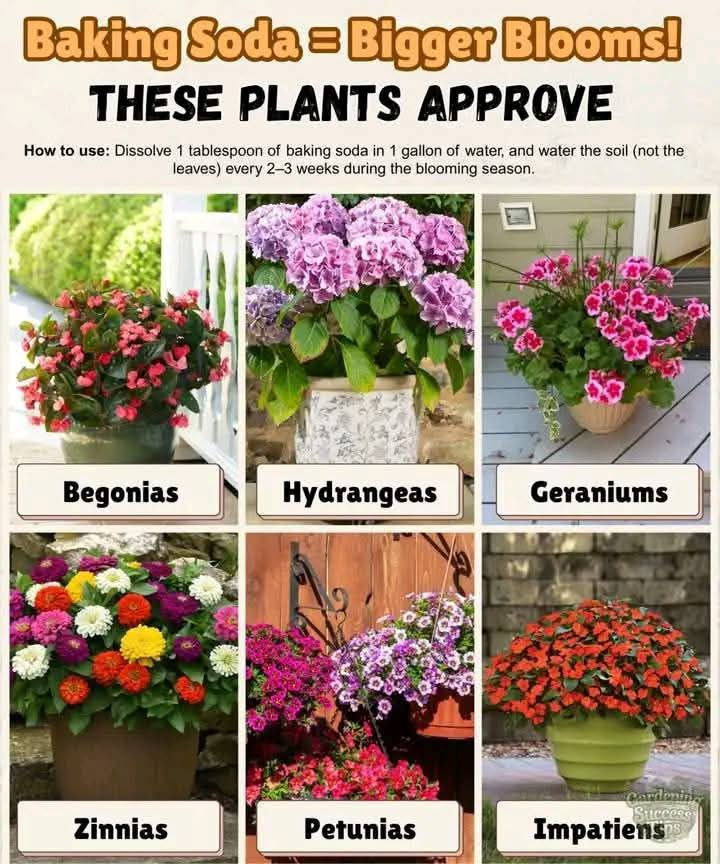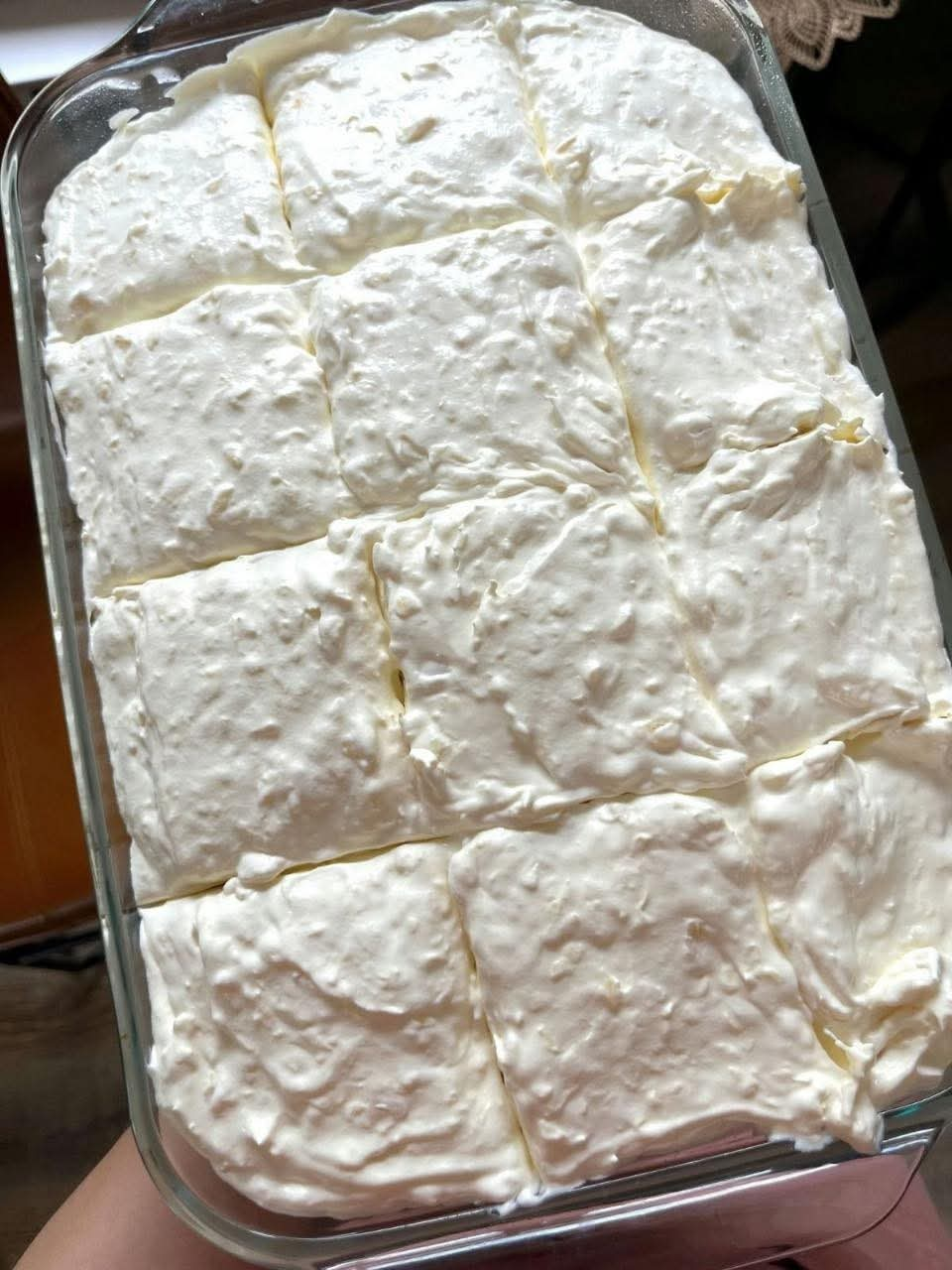Every gardener dreams of vibrant flower beds bursting with color—and what if we told you one of the best bloom-boosting secrets is sitting right in your kitchen? Yep, that humble orange box of baking soda isn’t just for baking cookies or deodorizing the fridge. It can actually help your flowers bloom bigger, brighter, and longer!
Let’s dive into how baking soda works its magic in the garden, especially for some of your favorite flowering plants.
Why Baking Soda Works in the Garden
Baking soda, or sodium bicarbonate, is a naturally alkaline substance. While it’s best known for cleaning and deodorizing, it also has fantastic benefits for soil and plant health.
Some flowers thrive in slightly alkaline soil, and when the pH is just right, they absorb nutrients more efficiently—especially phosphorus, which is crucial for blooming. By adjusting the soil pH ever so slightly with baking soda, you create ideal growing conditions for certain flowers.
But remember: baking soda is not a fertilizer. It’s a soil conditioner that works best when used occasionally and with the right plants.
Flowers That Love a Little Baking Soda
These blooms are known to benefit from slightly alkaline conditions and respond well to a baking soda tonic:
1. Begonias
Begonias are beloved for their colorful blooms and lush leaves. A touch of baking soda can help support healthy growth and vivid flowers, especially if your soil is naturally a bit too acidic.
2. Hydrangeas (Especially Pink Ones)
Hydrangeas are pH-sensitive plants—acidic soil turns them blue, while alkaline soil encourages pink hues. So if you’re dreaming of big, blush-pink hydrangea blooms, baking soda can nudge your soil in the right direction.
3. Geraniums
Geraniums are garden classics, thriving in containers or beds. They’re hardy but still appreciate a gentle pH adjustment now and then to stay lush and blooming all season.
4. Zinnias
Zinnias are sunshine-loving flowers that bloom endlessly with the right care. Alkaline soil can help them grow stronger and bloom with even more intensity.
5. Petunias
Petunias are beautiful trailing flowers that do best with regular care. Baking soda helps prevent root stress and supports vibrant blossoms.
6. Impatiens
Shade-loving and colorful, impatiens benefit from a slightly raised soil pH and gentle nourishment—just the kind baking soda can provide.
How to Make a Baking Soda Bloom Booster
It’s easy! All you need is:
- 1 tablespoon baking soda
- 2 quarts of water
Instructions:
Mix the baking soda into the water until it dissolves.
Once a month, water the base of the plant with this solution—avoid getting it on leaves, which can sometimes cause spotting or mild burn in hot sun.
Repeat monthly throughout the blooming season for best results.
Important tip: This works best when the soil is not already overly alkaline. Always monitor your plant’s health and soil conditions if applying regularly.
Extra Benefits of Baking Soda in the Garden
Besides helping your flowers bloom, baking soda has several added perks:
Mild antifungal properties: Helps prevent mildew or powdery spots on leaves.
Pest deterrent: Deters slugs, aphids, and some soft-bodied pests when sprinkled around plant bases.
Weed control aid: In higher concentrations, it can be used to help kill weeds in walkways (but be careful—it’s non-selective and may harm nearby plants).
Things to Watch Out For
While baking soda can be a helpful garden ally, it’s important not to overuse it. Too much baking soda can:
Accumulate salt in the soil, affecting plant health.
Alter soil structure if applied too frequently.
Harm acid-loving plants like azaleas, blueberries, and rhododendrons.
Use it sparingly and only on plants that benefit from slightly alkaline conditions.
Other Natural Ways to Encourage Blooming
If you’re loving the baking soda trick, here are a few more natural ways to help your garden burst into bloom:
1. Deadheading
Regularly removing faded flowers tells your plant to produce more blooms instead of seeds.
2. Proper Watering
Flowers need consistent moisture—too much or too little can reduce blooming. Aim to water early in the morning and keep soil moist but not soggy.
3. Balanced Fertilizer
Look for fertilizers high in phosphorus (the middle number in N-P-K) to support blooms.
4. Sunlight
Make sure your flowering plants get the amount of sun they need—most bloomers want 6+ hours of direct light each day.
5. Mulching
Mulch helps retain soil moisture and regulate temperature, which keeps your blooms healthier longer.
Final Thoughts: Bloom Bigger with Baking Soda!
A little baking soda can go a long way in helping your favorite flowers thrive. It’s easy, budget-friendly, and perfect for garden lovers who enjoy natural solutions.
So next time you’re mixing up pancakes or scrubbing your sink, save a spoonful of baking soda for your begonias and petunias. With just a once-a-month sprinkle of this bloom-boosting tonic, you’ll enjoy more colorful, longer-lasting flowers—and one very happy garden.
Try it yourself and watch your flowers pop like never before! Have questions or want to share your own baking soda garden tips? Drop them in the comments or tag us in your garden photos.
Happy Gardening!
Would you like a printable version or want this formatted for Facebook or Pinterest?
More Articles You Might Like
-
Texas Toast Sloppy Joes: The Crunchy, Cheesy Upgrade You Didn’t Know You Needed
There’s something timeless about sloppy joes. For generations, this saucy, savory, and slightly sweet ground beef sandwich has been a go-to comfort food in American kitchens. It’s quick, filling, and family-friendly—perfect for busy weeknights. But what if we told you there’s a way to take this classic dish up a notch? Enter the Texas Toast…
-
Classic Pig Pickin’ Cake
When it comes to Southern desserts, few sweets shine as brightly as the Classic Pig Pickin’ Cake. This nostalgic cake, sometimes called a “Mandarin Orange Cake,” has roots deep in Southern tradition. It gets its playful name from its frequent appearance at pig pickin’s—Southern-style barbecue gatherings where communities come together to enjoy slow-cooked pork, sides,…
-
Lemon Garlic Butter Chicken with Creamy Parmesan Pasta
There’s something irresistible about the combination of tender, golden-browned chicken paired with a creamy pasta coated in Parmesan cheese. Add the brightness of lemon, the depth of garlic, and the richness of butter, and you have a recipe that feels indulgent yet approachable enough for a weeknight dinner. Lemon Garlic Butter Chicken with Creamy Parmesan…



